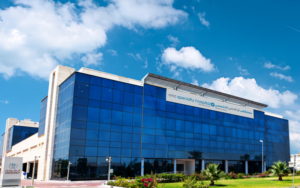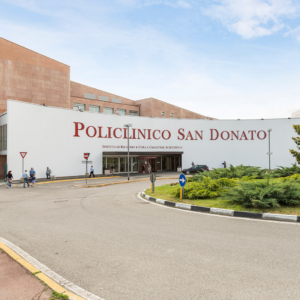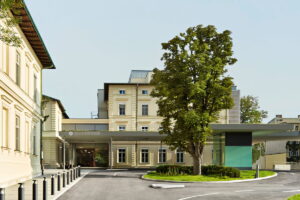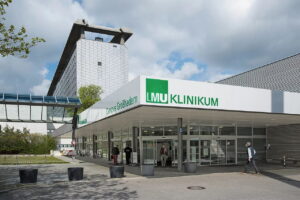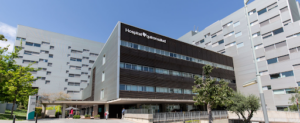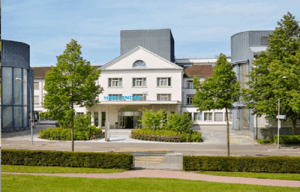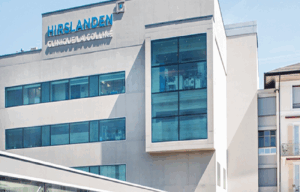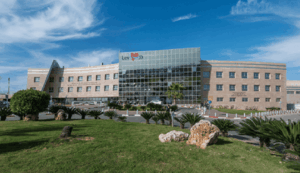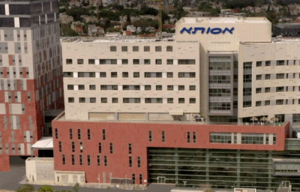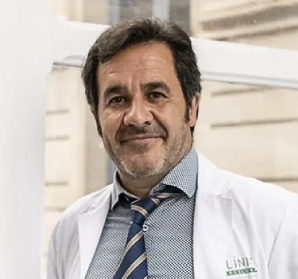Glioblastoma
Disease description
Glioblastoma is one of the most aggressive forms of brain cancer that affects glial cells. It grows rapidly, infiltrates surrounding tissues, and has a high tendency to recur. Glioblastoma accounts for approximately 15% of all brain tumors in adults and is characterized by a poor prognosis due to its aggressive nature and surgical complexity.
Symptoms requiring diagnosis and treatment:
- Persistent headaches that worsen in the morning
- Seizures or epileptic episodes
- Impaired coordination and balance
- Speech or memory difficulties
- Visual and auditory disturbances
- Rapid fatigue and weakness
Diagnostic and treatment methods
Diagnosis
The diagnosis of glioblastoma begins with a neurological examination followed by contrast-enhanced magnetic resonance imaging (MRI), which provides detailed visualization of the tumor. In some cases, computed tomography (CT) is used to assess the extent of involvement and impact on adjacent brain structures. A tumor biopsy is also performed for histological analysis, confirming the diagnosis and guiding the most effective treatment strategies.
Treatment
The treatment of glioblastoma requires a comprehensive approach, including surgical intervention to remove as much of the tumor as possible. This is typically followed by a course of radiation therapy combined with chemotherapy to eliminate remaining cancer cells. In some cases, targeted drugs are used to act on specific molecular targets in tumor cells. Supportive therapy aimed at symptom control and improving the patient’s quality of life also plays a crucial role.
Innovations in global clinics
Innovative approaches in glioblastoma treatment include the use of genetically modified viruses and immune cells designed to destroy cancer cells without harming healthy tissue.
Additionally, research is underway on personalized immunotherapy based on the tumor’s DNA profile and the use of neuronavigation systems for more precise surgical interventions. Nanoparticles for targeted drug delivery to tumor cells are also being actively developed, enhancing treatment efficacy while reducing side effects.
Top clinics
-
 Max Grundig Clinic
Max Grundig Clinic -
 Duisburg-Nord Hospital of the Niederrein Complex
Duisburg-Nord Hospital of the Niederrein Complex -
 University Hospital Freiburg
University Hospital Freiburg -
 Medistate International Hospital
Medistate International Hospital -
 Ajibadem Atasehir Clinic
Ajibadem Atasehir Clinic -
 Medical Park Antalya Clinic
Medical Park Antalya Clinic -
 Dubai, UAE NMC Healthcare
Dubai, UAE NMC Healthcare -
 Shishli Memorial Clinic.
Shishli Memorial Clinic. -
 Milan, Italy San Donato Hospital in Milan, Italy
Milan, Italy San Donato Hospital in Milan, Italy -
 Milan, Italy San Raffaele University Hospital
Milan, Italy San Raffaele University Hospital -
 American Hospital Dubai
American Hospital Dubai -
 Burjeel Hospital Abu Dhabi
Burjeel Hospital Abu Dhabi -
 Debling Private Clinic
Debling Private Clinic -
 Rudolfinerhaus Private Clinic.
Rudolfinerhaus Private Clinic. -
 University Hospital Heidelberg
University Hospital Heidelberg -
 Vienna, Austria Wiener Privatklinik (WPK)
Vienna, Austria Wiener Privatklinik (WPK) -
 Munich, Germany University Hospital Munich (Ludwig-Maximilians-Universität)
Munich, Germany University Hospital Munich (Ludwig-Maximilians-Universität) -
 Asklepios Nord Heidberg
Asklepios Nord Heidberg -
 Charité Clinic
Charité Clinic -
 Lindbergh Clinic
Lindbergh Clinic -
 Gil Medical Center at Gachon University
Gil Medical Center at Gachon University -
 Clinique Montchoisy
Clinique Montchoisy -
 Clinique Genolier
Clinique Genolier -
 Ataşehir Memorial Clinic
Ataşehir Memorial Clinic -
 Barcelona, Spain QuironSalud Barcelona Hospital
Barcelona, Spain QuironSalud Barcelona Hospital -
 Barcelona, Spain Medical Center "Teknon"
Barcelona, Spain Medical Center "Teknon" -
 Barcelona, Spain Sant Joan de Deu Children's Hospital
Barcelona, Spain Sant Joan de Deu Children's Hospital -
 Barcelona, Spain University Hospital Barnaclinic+
Barcelona, Spain University Hospital Barnaclinic+ -
 Madrid, Spain University Clinic HM Madrid
Madrid, Spain University Clinic HM Madrid -
 Madrid, Spain University Hospital HM Monteprincipe
Madrid, Spain University Hospital HM Monteprincipe -
 Gebze, Turkey Anadolu Clinic
Gebze, Turkey Anadolu Clinic -
 Zurich, Switzerland Hirslanden Clinic
Zurich, Switzerland Hirslanden Clinic -
 Madrid, Spain Quiron Salud University Hospital
Madrid, Spain Quiron Salud University Hospital -
 Geneva, Switzerland Clinique des Grangettes
Geneva, Switzerland Clinique des Grangettes -
 Duesseldorf, Germany Oncological Center Dusseldorf
Duesseldorf, Germany Oncological Center Dusseldorf -
 Petah Tikva, Israel Schneider Children's Medical Center
Petah Tikva, Israel Schneider Children's Medical Center -
 Seoul, South Korea Samsung Medical Center
Seoul, South Korea Samsung Medical Center -
 Seoul, South Korea Medical Center at Ewha Womans University
Seoul, South Korea Medical Center at Ewha Womans University -
 SNUH
SNUH -
 г. Женева, Швейцария Клиника «Женераль-Болье»
г. Женева, Швейцария Клиника «Женераль-Болье» -
 г. Женева, Швейцария Hirslanden Clinique La Colline
г. Женева, Швейцария Hirslanden Clinique La Colline -
 г. Сеул, Южная Корея Медицинский центр «Асан»
г. Сеул, Южная Корея Медицинский центр «Асан» -
 г. Рамат-Ган, Израиль Клиника Шиба
г. Рамат-Ган, Израиль Клиника Шиба -
 г. Тель Авив, Израиль Медицинский центр “Ассута”
г. Тель Авив, Израиль Медицинский центр “Ассута” -
 г. Петах-Тиква, Израиль Медицинский центр имени Ицхака Рабина
г. Петах-Тиква, Израиль Медицинский центр имени Ицхака Рабина -
 г. Иерусалим, Израиль Медицинский центр “Хадасса”
г. Иерусалим, Израиль Медицинский центр “Хадасса”





